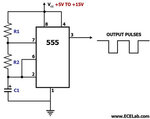cyanpraveen
Junior Member level 3
hello guys,
Is anyone used Gunn transceiver sensor developed by microsemi.
I am using MO9081 gunn transceiver. i would like to know how to test the gunn transceiver
and how to check the speed variation through that sensor.
i also need to know the connection setting for that transceiver
check the datasheet for the mentioned component here
MO9081 | Microsemi
thanks for the reply...
Is anyone used Gunn transceiver sensor developed by microsemi.
I am using MO9081 gunn transceiver. i would like to know how to test the gunn transceiver
and how to check the speed variation through that sensor.
i also need to know the connection setting for that transceiver
check the datasheet for the mentioned component here
MO9081 | Microsemi
thanks for the reply...
